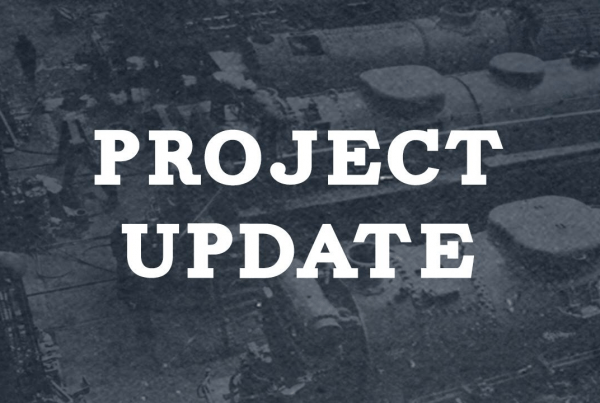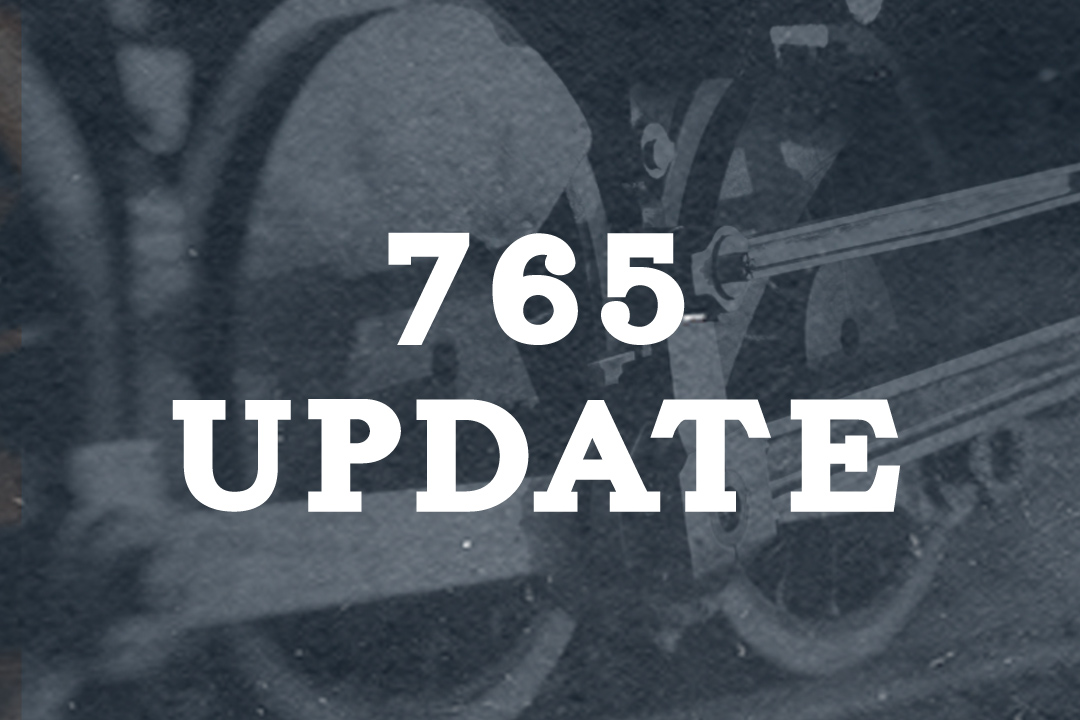Submitted by Steve Winicker
LAST WEEKENDS SHOP ACTIVITY
Spent the week making arch brick and filled in with some work on the cabooses. Saturday Brody talked me into letting him blow out the flues and do some firebox cleaning. Over Saturday and Sunday, he got all the flues cleared of carbon residue and cinders. He also did some cleaning of the grates and firebox walls. Despite the cleaning you can still find plenty of soot to turn you black if you wish to go in and look at the job. We had a bumper crop of guests on Saturday, Chuck Young spent some time showing that group around. Chuck also spent some time sweeping and mopping the cabooses and deserves an award for taking on that task. Both the 2543 and 451 were badly in need of some interior cleaning. Malachi came by Sunday, so we spent the afternoon organizing the shop.
UPCOMING ACTIVITIES
I may get a supply of Targuard this week, if so, finishing up the 765’s tender inside will be on the schedule. We could also get into putting the arch brick back in the engine. There are many other projects underway with work on the box car and 358 taking center stage. Also cleaning and organizing the shop is an ongoing project.
SAFETY SENSE
Electrical hazards on the job can be avoided by following approved OSHA guidelines. Attention to safety is the important first step to an effective work program.
Skilled personnel should make sure they understand and follow safety precautions. Those not trained to recognize and avoid electrical hazards, or not under the supervision of those qualified in electrical safety procedures, should avoid contact with electrical equipment and systems.
· Understand the construction and operation of the electrical equipment and the hazards involved.
· Identify all possible energy sources that could pose on-the-job hazards.
· Know safety requirements and follow them.
· Assure the appropriate personal protective equipment (PPE) is being worn.
· Complete a detailed job plan, ie Pre Job Briefing, and communicate it to all coworkers.
· Before working on or around electrical systems or equipment, identify the load circuits and disconnect. Remember, in some cases, turning power off may cause other hazards. Such hazards and additional guidance should be addressed in your work plan.
· Use lock-out/tag-out procedures.
· Make sure your test equipment is working, both before and after you use it.
· Verify that the equipment or system has been de-energized by testing.
· If at any time the job becomes more hazardous than anticipated, stop and revise the plans.
Above all, never assume that the equipment or system is de-energized. Remember to always TEST BEFORE YOU TOUCH.
SAFETY IS JOB 1
SAFETY FIRST ALWAYS


